Rare Rides Icons: The Cadillac Eldorado, Distinctly Luxurious (Part XXII)
Rare Rides Icons: The Cadillac Eldorado, Distinctly Luxurious (Part XXI)
It was time for a new styling theme at Cadillac in 1959, when lead designer Harley Earl reached mandatory retirement age. Bill Mitchell, longtime right hand man and team succeeded Earl and implemented immediate styling changes. Some of those - like huge fins - were to compete with Chrysler and Imperial designs, but others were an effort at streamlining and modernization; moving away from post-War looks. Today we’ll take a look at the changes underneath these grandiose and (often) pink metallic bodies.
Rare Rides Icons: The Cadillac Eldorado, Distinctly Luxurious (Part XX)
Rare Rides Icons: The Cadillac Eldorado, Distinctly Luxurious (Part XIX)
We’re back with more Cadillac Eldorado today, in our final entry on the third generation models. We spent our last installment reviewing the special and sometimes troublesome engineering that was standard on the Brougham. Since then, I discovered this April 1957 edition of The Cadillac Serviceman, GM’s in-house magazine publication for its dealer service centers. Twelve clearly scanned pages of technical and service detail await you! After reading, return here and learn about the changes made to the Eldorado line in 1958.
Rare Rides Icons: The Cadillac Eldorado, Distinctly Luxurious (Part XVIII)
We’re back with more Cadillac Eldorado coverage this week. In our last installment (over a month ago) we reviewed the interior accouterments of the Eldorado Brougham that were far beyond the standard Eldorado. Aside from its coach door hardtop body style, the other area where the Brougham went its own way was in engineering. And some of that engineering was of the experimental variety. What could go wrong?
Rare Rides Icons: The Cadillac Eldorado, Distinctly Luxurious (Part XVII)
In our last installment of Rare Rides, we checked out the interior changes Cadillac’s engineers and designers made for the new and improved third generation Eldorado in 1957. And while the interior of the standard Eldorados that year was largely shared with the rest of the Cadillac lineup, there was an exception: Eldorado Brougham. Like we saw previously with the Brougham’s mix-and-match approach in use of old and new exterior styling cues, the interior went its own direction as well.
Rare Rides Icons: The Cadillac Eldorado, Distinctly Luxurious (Part XVI)
We spent our last installment reviewing the more modern exterior styling of the 1957 Eldorado Seville, and new-yet-dated looking Eldorado Brougham. Those two followed our coverage of the Eldorado Biarritz, which was unable to adopt Cadilac’s 1957 roof and pillars design because of its canvas roof. This week we step inside the Eldorado, and see how removed it was from the 1956 models.
Rare Rides Icons: The Cadillac Eldorado, Distinctly Luxurious (Part XV)
Last week in our Cadillac Eldorado saga, we covered the visual updates in the new-for-’57 Eldorado Biarritz. Part of a styling revision across the line at Cadillac that year, the Eldorado in particular drifted away from the bulbous fenders and tall hood shapes that were a hallmark of post-WWII American car design. But there were two more Eldorados in 1957! One of them looked more daring than the Biarritz, and the other looked almost like it was from the past.
Rare Rides Icons: The Cadillac Eldorado, Distinctly Luxurious (Part XIV)
As we learned in our previous installment, the third generation Eldorado debuted in 1957 with a daring new X-frame chassis design. Launched across the entire Cadillac lineup that year, the X-frame would become controversial in short order due to safety concerns in side-impact crashes. Up top, Cadillac decided to make less controversial styling changes on the 1957 Eldorados. Designers advanced a styling theme that would reach its fin-happy and chrome bedazzled crescendo a couple of years later.
Rare Rides Icons: The Cadillac Eldorado, Distinctly Luxurious (Part XIII)
As we learned in our last installment, the Cadillac lineup was revised visually for 1957, and would be revised again in 1958 once quad headlamps became legal. Fins grew, hoods smoothed, roofs leaned backward, and there were more Eldorado variants than ever before. But styling and lineup changes weren’t the only new features in 1957: Cadillac was also eager to tout its Standard of the World engineering, safety, and engine advancements!
Rare Rides Icons: The Cadillac Eldorado, Distinctly Luxurious (Part XII)
The second generation Cadillac Eldorado was met with immediate sales success after its repositioning from a halo vehicle to a more affordable upmarket trim package in 1954. Expanding upon the success in its third and final model year, the second-gen Eldorado sprouted a new body style (a hardtop coupe) called Seville in addition to the mainstay convertible sibling christened Biarritz. In 1958 it was time for all-new Eldorado(s), in a moment that would see the nameplate expand into a small lineup in two very distinct price brackets. Time for model range detail!
Rare Rides Icons: The Cadillac Eldorado, Distinctly Luxurious (Part XI)
The product people at Cadillac made a crucial decision early in the Fifties with regard to the positioning of the second generation Eldorado: It would be less expensive, and less special. The unique content of the exclusive limited-run 1953 Eldorado meant it had a stratospheric price that put it out of reach for the vast majority of consumers. The subsequent 1954 Eldorado appeared with a more reasonable price, and was a fancy trim package atop the new Series 62 convertible. Sales skyrocketed, and the trajectory for the remainder of the second generation was set!
Rare Rides Icons: The Cadillac Eldorado, Distinctly Luxurious (Part X)
When it debuted in its second generation guise for the 1954 model year, the Cadillac Eldorado changed its approach from low-production halo car to expensive trim package. The new take and lower price resonated with consumers and sales jumped immediately. Boldened, in 1955 a refreshed Eldorado appeared with a new rear end treatment that featured large fins not found on other Cadillac models. Upon the Eldorado’s return to (partially) unique styling, sales nearly doubled. Cadillac wanted more, and so for its final second generation outing in 1956 Eldorado was expanded into a new body style and two luxurious new trim names.
Rare Rides Icons: The Cadillac Eldorado, Distinctly Luxurious (Part IX)
We return to our Rare Rides Eldorado coverage this week, after a thorough review of the exterior and interior of the new-for-’54 Eldorado. The new model was meant to continue the excitement of the limited-run, very expensive 1953 Eldorado at a price that was notably more affordable to the American luxury car buyer. A more cynical take on a halo convertible, the 1954 went without any unique styling and instead focused on trim and badges to differentiate it from the garden variety Series 62 convertible upon which it was based. Normally this is the point where we’d talk about trims, but there weren’t any at the second Eldorado’s debut. It was not until after the model became a sales success that Cadillac debuted more variants.
Rare Rides Icons: The Cadillac Eldorado, Distinctly Luxurious (Part VIII)
In our last installment of Rare Rides Icons, we noted exterior visual differences between the Eldorados of 1953 and 1954. While the first Eldorado wore bodywork unique to the model, the second generation relied on trim and some badging to justify its price increase over the lesser Series 62. Today we slide into the Eldorado’s leather-clad interior to see how things fared in the transition to a mass-produced model.
Rare Rides Icons: The Cadillac Eldorado, Distinctly Luxurious (Part VII)
We return to the Cadillac Eldorado saga today by popular demand. In our last entry, we delved into the engineering and platform changes that arrived for the entire Cadillac line in 1954. In short, the same C-body platform continued in use for Series 62, Sixty Special, and Eldorado with new bodywork and additional standard features. Eldorado was repositioned in ‘54 to become mass market, and lost its unique styling. That meant visual differences between it and the lesser Series 62 convertible were down to pieces of trim.
Rare Rides Icons: The Cadillac Eldorado, Distinctly Luxurious (Part VI)
As we learned in our last installment, when the second generation Eldorado debuted in 1954 it was repositioned at Cadillac. No longer was it an ultra expensive and largely hand-built conveyance for a select few who could afford it. Rather it appeared as a sort of premium trim package on top of the company’s bread and butter Series 62. No unique body panels, no special interior design, no single-model windshield. Was there much left to differentiate Eldorado from its sibling?
Rare Rides Icons: The Cadillac Eldorado, Distinctly Luxurious (Part V)
Of the three high-dollar, limited-production two-door convertibles GM debuted in 1953, Cadillac’s Series 62 Eldorado was far and away the most expensive. With its drop-door styling, a loaded interior covered in additional leather, and a sky-high $7,750 price tag, Eldorado was out of the reach of the majority of consumers. And though it sold only 532 examples, GM felt the model’s future was bright. That is if they could just cut the asking price down to something more reasonable. Enter the all-new 1954 Eldorado, swimming in a sea of fins.
Rare Rides Icons: The Cadillac Eldorado, Distinctly Luxurious (Part IV)
In our last Eldorado entry, we discussed the exterior differences between Cadillac’s standard Series 62 convertible and the limited production Eldorado. Visual differences were few, and limited to a revised window line via “drop door” sheet metal, and a wraparound windshield that was fitted only to the Eldorado in ‘53. There were interior differences too, though they didn’t quite add up to the “specially designed instrument panel” claim in the marketing.
Rare Rides Icons: The Cadillac Eldorado, Distinctly Luxurious (Part III)
Rare Rides Icons: The Cadillac Eldorado, Distinctly Luxurious (Part II)
We began our journey through 50-plus years of the Cadillac Eldorado last week. Conceived as a new high-end convertible in the years leading up to the personal luxury car, the Series 62 Eldorado “sports convertible” wore unique sheet metal to all other Cadillac models in 1953. Joined that year by the Oldsmobile Ninety-Eight Fiesta and Buick Roadmaster Skylark, the trio represented GM’s new high-cost, low-volume halo convertible experiment. Unlike later examples of two-door vehicles from the three most expensive GM brands, these three were not the same underneath.
Rare Rides Icons: The Cadillac Eldorado, Distinctly Luxurious (Part I)
After completing our extensive Rare Rides Icons coverage of every Lincoln (Continental) Mark between 1939 and 1998, it seems only fair we cover the Mark’s arch-rival in a similar fashion. Though the General Motors competition arrived long after the Continental name was applied to a Lincoln, its history is equally varied and interesting. Come along as we learn about another luxurious subject: the Cadillac Eldorado.
Rare Rides Icons: The Lincoln Mark Series Cars, Feeling Continental (Part L)
We’ve reached the end of the road for the Lincoln Mark series. Through 50 installments on these pages that span history back to 1939, the Lincoln Mark (née Continental Mark) met its end in June of 1998. To celebrate the occasion of the Mark’s demise, it was time for one last go at a very special version: the 1998 Collector’s Edition. A trim package like Lincoln created previously for the Mark V in 1979, Collector’s Edition introduced some luxury features that should have been standard on Mark VIII all along.
Rare Rides Icons: The Lincoln Mark Series Cars, Feeling Continental (Part XLIX)
In our last Mark VIII installment, we reached the coupe’s final (and divisive) styling refresh that debuted for the 1997 model year. Arguably more bulbous, less cohesive, and with a trim design that highlighted the many instances where there was less than perfect build quality, the Mark VIII entered its final two years with a new look. There were some changes underneath the skin too, and even a couple of very special limited-run trims in a similar vein to the Diamond Anniversary package of 1996.
Rare Rides Icons: The Lincoln Mark Series Cars, Feeling Continental (Part XLVIII)
As we learned in our last installment, when the Mark VIII debuted for 1993 it was (puzzlingly) in a single trim level, absent any designer name or sportier LSC. This omission was remedied midway through the 1995 model year when the LSC made its triumphant and monochromatic return to the lineup. The only exciting news for the Mark in 1996 was the limited edition Diamond Anniversary package, to celebrate Lincoln’s 75th birthday. The following year Lincoln debuted a mid-cycle refresh for the Mark VIII, though it ended up more of an end-of-life refresh. Are you ready for some new, blobby shapes?
Used Car of the Day: 2006 Saturn Ion Redline
Saturn made just 260 2006 Saturn Ion Redlines in the color red, and today's UCOTD is one of them.
Rare Rides Icons: The Lincoln Mark Series Cars, Feeling Continental (Part XLVII)
When the Mark VIII debuted for the 1993 model year with a daring and sleek new body and an interior to match, it was indicative of the forward-looking, modern direction of Lincoln’s personal luxury coupe. This new school of design was evident inside and out: No longer were there acres of velour, tall hood ornaments, and goofy color schemes created “by designers.” Instead focus was on a generous helping of luxury features, high-tech doo-dads, and a singular trim level. Sorry, Mr. Bill Blass.
Rare Rides Icons: The Lincoln Mark Series Cars, Feeling Continental (Part XLVI)
Last week we examined the curvaceous organic exterior styling the new Mark VIII wore for its 1993 debut. As one of the early offerings from the Super Smooth Soap Bar School of Design that arrived in the Nineties (think Chrysler LHS, Lexus SC 400, Toyota Celica), the Mark VIII looked much different from the more conservative Mark VII. And it had an interior design aesthetic to match. Beware: Sweeping swaths of plastic lie ahead!
Rare Rides Icons: The Lincoln Mark Series Cars, Feeling Continental (Part XLIV)
When the MN12 platform project was launched in 1984, Ford’s plan to take on European two-doors saw the standard Thunderbird and Cougar chassis lightly revised (via more aluminum) into the FN10. The FN10 was used exclusively in the Lincoln Mark VIII and also debuted an all-new sophisticated aluminum V8 engine. Unlike the Thunderbird and Cougar which shared body panels, the Mark VIII was deemed worthy of its own styling. The development of said styling was a long and bumpy road and led to a considerable delay in the Mark VIII’s launch.
Rare Rides Icons: The Lincoln Mark Series Cars, Feeling Continental (Part XLIII)
Ford spent a lot of money and a lot of time on the development of the MN12 platform. An intentional move on the company’s part, the plan was to catch a more elevated customer than those persuaded by the Fox body trio: Ford Thunderbird, Mercury Cougar, and Lincoln Mark VII. In particular, BMW was on the mind of all domestic manufacturers in the Eighties as yuppies pursued status and Ultimate Driving Machine pleasure. Ford attempted to deliver the same experience for less money with its MN12 coupes and derivative FN10; a lightly reworked MN12 chassis used exclusively on the new Mark VIII.
Rare Rides Icons: The Lincoln Mark Series Cars, Feeling Continental (Part XLII)
We bid a sad farewell to the Mustang-adjacent Mark VII in our last installment. The first Continental Mark to adopt modern styling and disconnect itself from the Mark III of 1968 was also the last of its kind to wear a Continental badge. And as Lincoln sought to clarify its product lineup by separating the Continental sedan and allowing the Mark to stand on its own, the company also attempted to bring in a new, sportier customer. And that customer became the target at which the Mark VIII was aimed.
Rare Rides Icons: The Lincoln Mark Series Cars, Feeling Continental (Part XLI)
Rare Rides Icons: The Lincoln Mark Series Cars, Feeling Continental (Part XL)
Here we are, the 40th installment in the Lincoln Mark series cars. After the debut of the exciting new Continental Mark VII in 1984 heralded the arrival of modern styling and a Luxury Sports Coupe (LSC) trim, Lincoln’s management made minor trim alterations in 1985 before Big Time Changes in 1986.
Rare Rides Icons: The Lincoln Mark Series Cars, Feeling Continental (Part XXXIX)
As we’ve learned in the prior two installments to this series, the Continental Mark VII was a new take on Lincoln’s halo PLC theme, inside and out. With a distinct move away from huge chrome bumpers, excessive trim, and bench-style seating for six, the Mark VII also wanted to move its trim designations beyond the leisure suit era that affected the prior two generations. The new trim hierarchy would end up the final time a Designer Series was available on a Mark.
Rare Rides Icons: The Lincoln Mark Series Cars, Feeling Continental (Part XXXVIII)
After a review of the Lincoln Continental Mark VII’s completely revamped and modernized styling in our last entry, we’ll spend this today on its interior. As Lincoln attempted to draw a new, more youthful well-heeled customer base to the Mark, the PLC traditionalist of yore faded away. And said youthful customer - usually with an eye on European cars - was less interested in acres of faux wood panel, ruched velour, traditional instruments, and overstuffed button-tufted interiors.
Rare Rides Icons: The Lincoln Mark Series Cars, Feeling Continental (Part XXXVII)
As we learned in our last entry, the new for ‘84 Lincoln Continental Mark VII headed in a different direction than any of its PLC predecessors. It was smaller and lighter than even the downsized Mark VI that came before it and rode on the newer Fox platform shared by the Mustang, Thunderbird, Cougar, and indeed the Continental sedan. The Mark’s Eighties evolution was a necessary measure as European luxury competition came in hot, and the disco-traditionalist type PLC customer of the past was no more. Lincoln’s designers had a tall order in the earliest days of the Eighties: Maintain the Mark’s identity generally as a Lincoln and a luxury coupe, and move its looks beyond everything prior to 1984.
Rare Rides Icons: The Lincoln Mark Series Cars, Feeling Continental (Part XXXVI)
When Lincoln’s new Continental Mark VII arrived for the 1984 model year, the sleek new coupe offered immediate relief from the tired (and lousy) Panther platform Mark VI that languished at dealers between 1980 and 1983. The move to the Fox platform with the likes of the Thunderbird and Cougar was accompanied by a big step forward in drivability, technology, and general modernization for the Mark. Finally!
Rare Rides Icons: The Lincoln Mark Series Cars, Feeling Continental (Part XXXV)
It didn’t take very long for the chilly reception of the downsized and Panther-based Mark VI to reach Ford HQ in Dearborn. Despite the seductive and elegant four-door Mark VI’s presence, sales were nowhere near those of the outgoing Mark V. Things continued on their downhill trend for the model’s four-year duration. It was time for an all-new take on the PLC from Lincoln.
Rare Rides Icons: The Lincoln Mark Series Cars, Feeling Continental (Part XXXIV)
In today’s Lincoln Mark coverage, we reach the conclusion of the ill-fated and unpopular Mark VI. Though the Mark of 1980 to 1983 was arguably the least interesting entry in the model’s history and the one with the least amount of effort put into it, Lincoln still charged a pretty penny for its PLC. But the market was changing, and so was Lincoln’s lineup.
Rare Rides Icons: The Lincoln Mark Series Cars, Feeling Continental (Part XXXIII)
We continue our Rare Rides coverage of the unfortunate Lincoln Continental Mark VI today, and take a deep dive into its cobbled-together and frequently shuffled trims, the Designer Series in particular. In a last-of moment, the Mark VI quickly lost the exclusivity it once carried as Lincoln’s purveyor of fine designer styling.
Rare Rides Icons: The Lincoln Mark Series Cars, Feeling Continental (Part XXXII)
We return to our Lincoln Mark series today, and the newly Panther-tized Mark VI coupe and sedan. We’ve already examined the exterior differences between Marks V and VI, as Lincoln designers attempted to replicate the successful looks of their late Seventies PLC with much less length and width available. Design freedom was additionally hampered by new platform sharing with the 1980 Continental, for which the Mark VI basically served as a top trim. Today we’ll check out the Mark’s newly modernized interior.
Rare Rides Icons: The Lincoln Mark Series Cars, Feeling Continental (Part XXXI)
During the mid-Seventies, the design team at Lincoln had a tall order in regard to the upcoming 1980 Mark VI. The all-new coupe would need to continue the PLC styling tradition of the Mark III, IV, and V, the former of which dated back to 1968. But for the first time, Mark’s "large and in charge" styling would be applied to a much smaller car. For an added challenge, Lincoln’s brass decided the Mark’s ethos needed conversion onto a sedan. Let’s see how it went.
Rare Rides Icons: The Lincoln Mark Series Cars, Feeling Continental (Part XXX)
It’s our 30th installment in the Lincoln Mark series, and we’re at a low point. As mentioned last time a confluence of different factors forced downsizing across the American car landscape. Money-saving tactics from the accountants at Ford meant the new, “improved,” and much smaller Mark VI wore almost identical styling to its lesser Continental sibling (a first). Both cars even shared a platform, with Mark VI offered in required two- and unexpected four-door guises.
Rare Rides Icons: The Lincoln Mark Series Cars, Feeling Continental (Part XXIX)
The successes the Lincoln Continental Mark series achieved with its triumphant return as the Mark III personal luxury coupe of 1969 ensured the Mark IV of 1972 was also a success. And when the Mark V debuted on its own (reused Thunderbird) platform in 1977, it brought the Mark name to a pinnacle of sales. Laden with trim, designer editions, and special commemorative super lux limited-run cars, it was a last-of moment: Lincoln was still selling true full-size cars while the rest of Detroit had already downsized. But the clock ran out on the enormous domestic luxury boat in 1979, and Lincoln needed a do-over for 1980. Enter a big misstep, the Mark VI.
Rare Rides Icons: The Lincoln Mark Series Cars, Feeling Continental (Part XXVIII)
For our 28th entry in the Lincoln Mark series retrospective, we arrive at a momentous and sad occasion: the end of the traditional full-size Mark V. In 1979, fuel economy concerns of consumers and government meddling in the form of emissions standards were layered onto a car market that contained ever-increasing numbers of economical, reliable Japanese imports. Other Detroit automakers threw up the white flag by 1977 and introduced smaller full-sized cars, but Ford held on to the bitter end. And for its three-year run, the Mark V sold very well, both as Lincoln’s most prestigious car and a full-size holdout at a time when many Americans really didn’t want to buy a smaller car.
Rare Rides Icons: The Lincoln Mark Series Cars, Feeling Continental (Part XXVII)
Making our way through the trim-laden legacy of the Lincoln Continental Mark V has consumed all of our attention over the past few weeks. After spending some time on the mid-tier Luxury Group packages of 1977 to 1979, we pored over the Designer Series editions of 1977 and 1978. The latter of those two years was Ford’s 75th anniversary and saw the launch of the super expensive Diamond Jubilee package to celebrate. For the Mark V’s outgoing year in 1979, the Designer Series cars returned, and Lincoln reworked the Diamond Jubilee package into the Collector’s Series. It’s time to have one final Mark V trim talk.
Rare Rides Icons: The Lincoln Mark Series Cars, Feeling Continental (Part XXVI)
We return with more Continental Mark V Designer Series goodness today, in our second of three consecutive installments on said topic. Last time we took a look at the resplendent luxury of the 1977 Designer Series trims in their respective Bill Blass, Cartier, Givenchy, and Pucci colorways. An immediate hit with consumers who were in desperate need of luxury gingerbread, the Designer Series trims were reworked in 1978 in the name of visual differentiation. There was also a very special and expensive Mark V commemorative edition in honor of Ford’s 75th anniversary.
Rare Rides Icons: The Lincoln Mark Series Cars, Feeling Continental (Part XXV)
As we move on to the 25th entry in our Lincoln Mark saga, it’s the second week in a row where we’ll focus entirely on Mark V trim packages. Last week we discussed the various iterations of the Luxury Group - a variety of color themes for the Mark V’s interior. Luxury Group options served as a starting place for the customer to custom-order their Mark V. However, the truly well-heeled PLC customer knew such freedom of choice was inherently sub-par: A Designer Series Mark V cost much more than a Luxury Group car, and its appearance was specified for you.
Rare Rides Icons: The Lincoln Mark Series Cars, Feeling Continental (Part XXIV)
We continue with more Continental Mark V coverage today, and hone our focus on the model’s various trims. After their successful (big profit center) introduction in 1976 on the Mark IV, the quite expensive Designer Series trims were a shoo-in for a return on Mark V. Lincoln took full advantage of the popularity of “special” trim and gingerbread during the late Seventies, and went a little wild with the options. New colors, limited editions, and Designer Series layouts that changed by the year! It’s time for some in-depth trim action, and Luxury Group is up first.
Rare Rides Icons: The Lincoln Mark Series Cars, Feeling Continental (Part XXIII)
We return to our Lincoln Mark Series coverage today, near the Mark V’s large B-pillar. While our last installment started on the exterior changes Lincoln designers made for the switch from Mark IV to Mark V for 1977, there’s so much car to cover (over 230 inches) that we had to take an intermission. It’s time for vinyl and big rear ends, and we’ll talk about the Mark too.
Rare Rides Icons: The Lincoln Mark Series Cars, Feeling Continental (Part XXII)
In the last installment of our Lincoln Mark coverage, we learned about some new objectives Lincoln brass pursued for the transition from Mark IV to Mark V. There were two primary goals in mind: Cut development costs, and simultaneously allow the Mark more independence from Thunderbird. As a result, the Mark V of 1977 used the same platform as the old Mark IV, and Thunderbird was downsized to become a Mercury Cougar sibling. Further, in an attempt to move with the times and recognize that fuel economy mattered a little bit at the end of the Seventies, Lincoln engineers reworked the Mark IV platform for Mark V duty.
Rare Rides Icons: The Lincoln Mark Series Cars, Feeling Continental (Part XXI)
When the Continental Mark IV was introduced for the 1972 model year, it wore close visual ties to the smash hit that was its predecessor, the Mark III. After federal safety legislation altered the front of the Mark IV’s appearance in 1973 and its rear in 1974, the visual connection between the two cars thinned considerably. The Mark IV (like other large PLCs of the time) struggled with regard to sales but received a boost in 1976 with the arrival of the Designer Series editions. The expensive high-profit trims saw the 1976 Mark IV go out on a high-ish sales note of 56,110 examples, around 8,000 more than its debut year in 1972. In 1977 Lincoln aimed once more for PLC success with the new, even larger Continental Mark V.
Rare Rides Icons: The Lincoln Mark Series Cars, Feeling Continental (Part XX)
Today marks the 20th installment of our coverage on the Lincoln Mark cars, and we’ve reached an exciting point in the model’s history. The brass at Lincoln noticed how the Mark IV’s sales were in decline (like all large PLCs of the time) as the Thunderbird-based boat headed toward its final year, 1976. To that end, Lincoln added excitement and luxury to its halo coupe via a new set of very special brand-themed options packages on ‘76 models. It’s time for the Designer Series.
Rare Rides Icons: The Lincoln Mark Series Cars, Feeling Continental (Part XIX)
When the Mark IV debuted in 1972, Lincoln’s personal luxury coupe was larger than ever before and had even more in common with its lesser sibling from Ford, the Thunderbird. As noted in our last installment, even the dashboards were identical between the two cars in this generation. The Mark IV’s debut appearance was short-lived, however, as the following year government legislation forced Lincoln’s designers and engineers to make some unfortunate-looking changes. Tell me, do you enjoy enormous bumpers?
Rare Rides Icons: The Lincoln Mark Series Cars, Feeling Continental (Part XVIII)
Cadillac led the charge into new Seventies-ready personal luxury coupes with their ninth-generation Eldorado in 1971. The following year, Ford followed suit with the Lincoln Continental Mark IV. Bigger and, in theory, better than its predecessor, it was also lesser in terms of Mark-specific sheet metal and quality interior amenities than the Mark III. The exterior of the new Mark IV was very similar to the Thunderbird since it shared a platform and the majority of its body panels. And those similarities continued right on into the interior.
Rare Rides Icons: In Memoriam, The Chrysler LX Platform (Part IV)
The Chrysler 300 was the first production car to use the LX platform and was arguably the most important as well. We discussed the debut and styling of the exciting new 300 in our last LX platform installment. When it debuted in 2005 with retro-inspired muscle car styling and a good deal of Mercedes-Benz componentry, it garnered an immediate and positive impression from the buying public with its looks. But did it fare as well on its interior? Let’s find out.
Rare Rides Icons, The Nissan Maxima Story (Part VII)
Unlike its third generation which had the upmarket sporty sedan segment largely to itself, when the fourth generation Maxima (A32) arrived in 1995 there were numerous new competitors from all directions. In its home market, the American-centric Maxima faded away and was replaced by the more internationally flavored Cefiro. Notably, the Cefiro wore Infiniti I30 styling in advance of its North American debut. In addition to the handful of variants for other markets like the Maxima QX and QX (which both wore Cefiro clothes), the A32 Maxima was also transformed into a very important car for the Korean market. Let’s talk about some business deals.
Rare Rides Icons: The Lincoln Mark Series Cars, Feeling Continental (Part XVII)
With its splashy debut and immediate sales success, Lincoln’s Continental Mark II I personal luxury coupe offered up immediate and serious competition to the more established Cadillac Eldorado, which previously had the market all to itself. With its unique styling different from other Continentals and a more upscale interior, the Mark typically won in comparison tests published by the automotive press of the day.
Rare Rides Icons: Lamborghini's Front-Engine Grand Touring Coupes (Part XII)
Ferruccio Lamborghini finally realized his dream of a proper four-seat grand touring coupe with the introduction of the Espada in 1968. The Espada entered production after a long and difficult styling process, which occurred simultaneously with a long and difficult engineering process. After multiple restyling attempts (and the use of a canned Jaguar coupe design), the Espada was produced in its Series I format from March 1968 to November 1969.



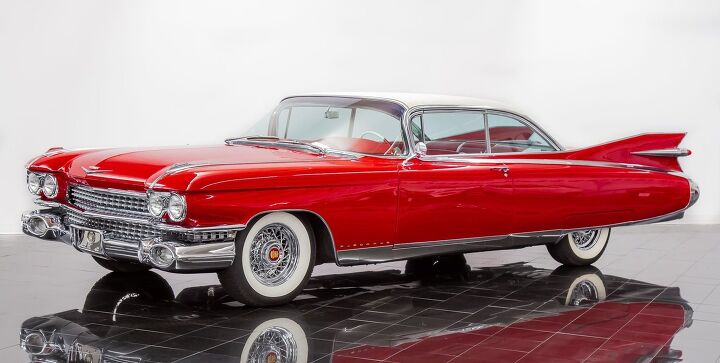

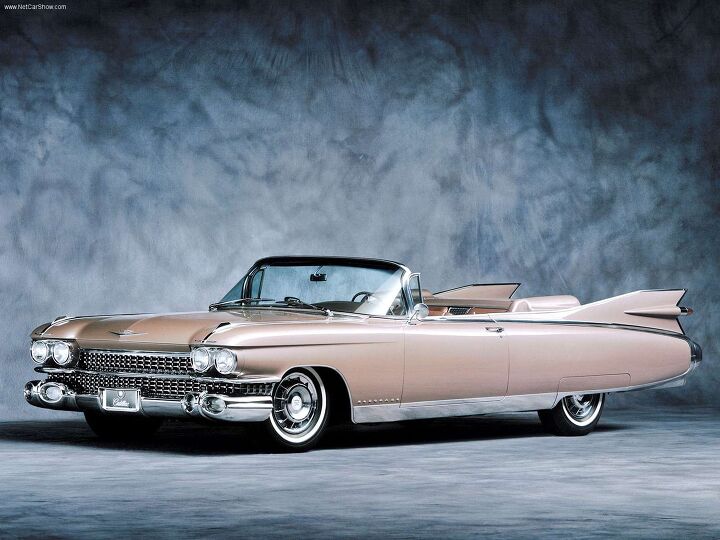
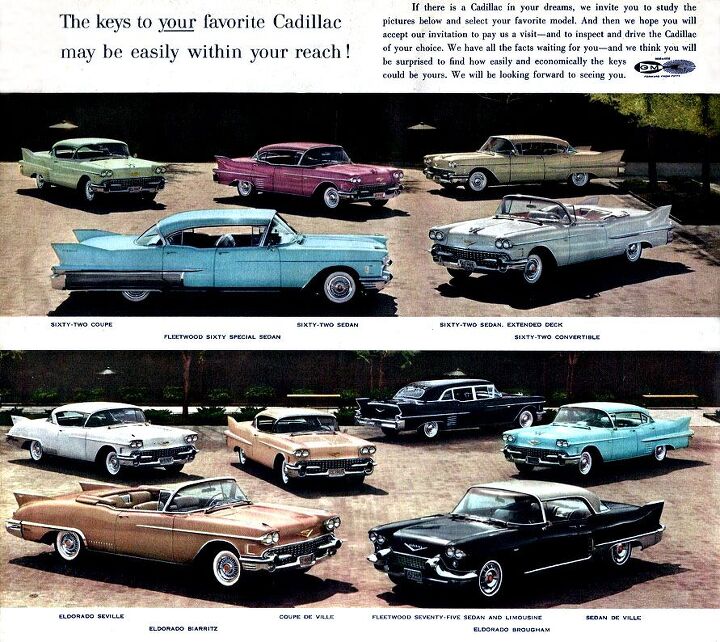
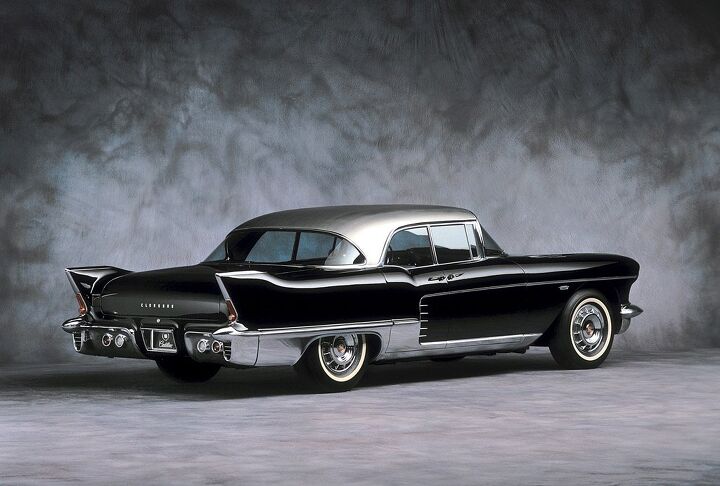

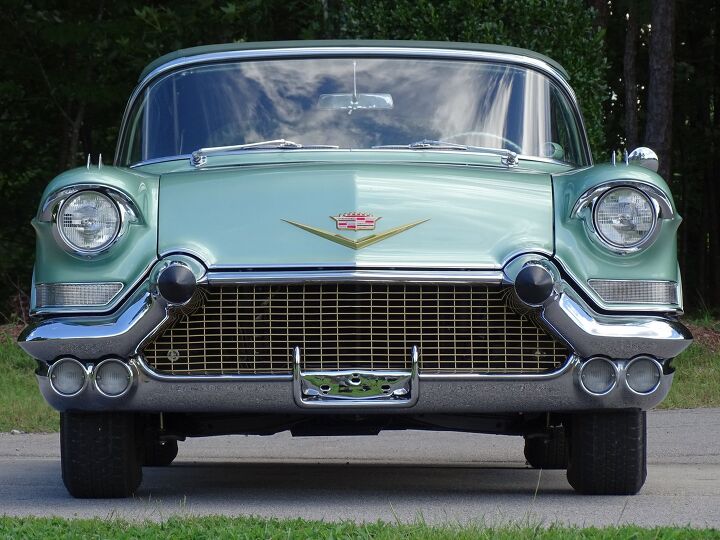
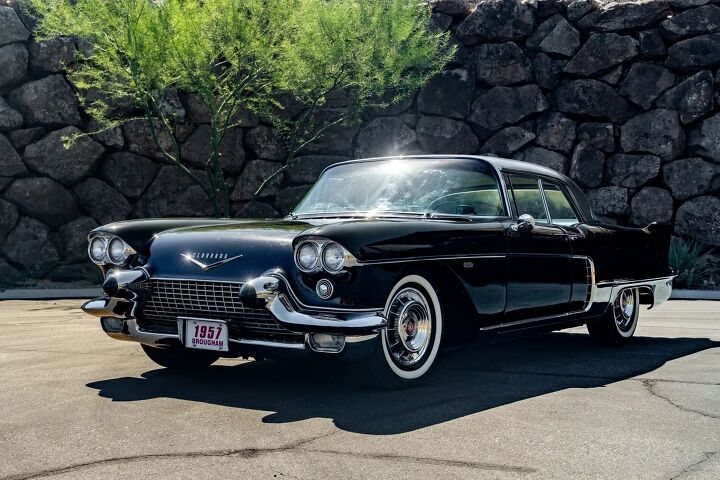
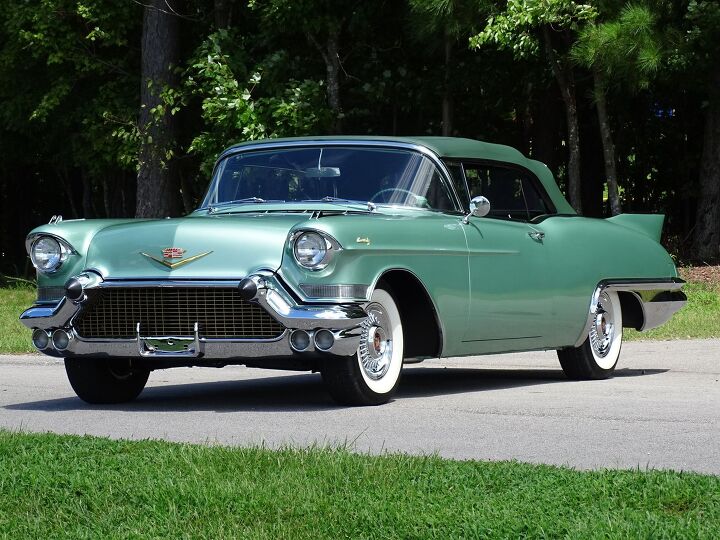

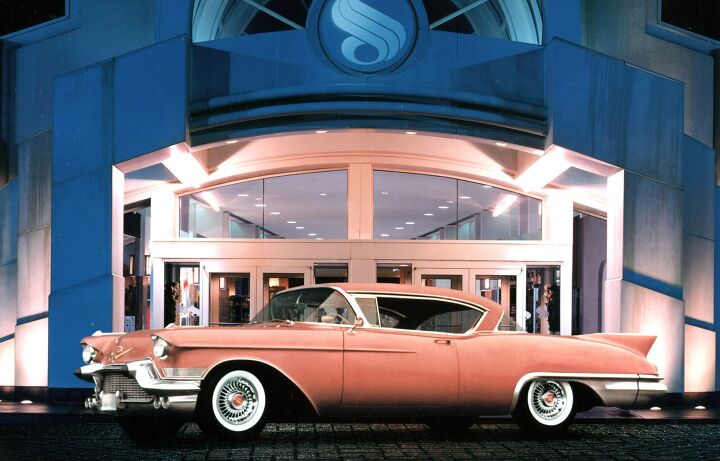





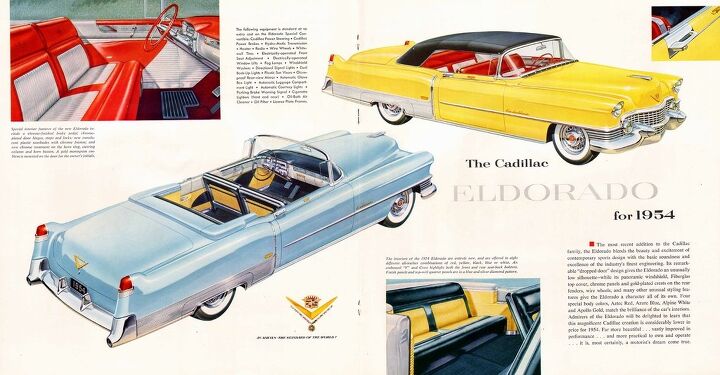
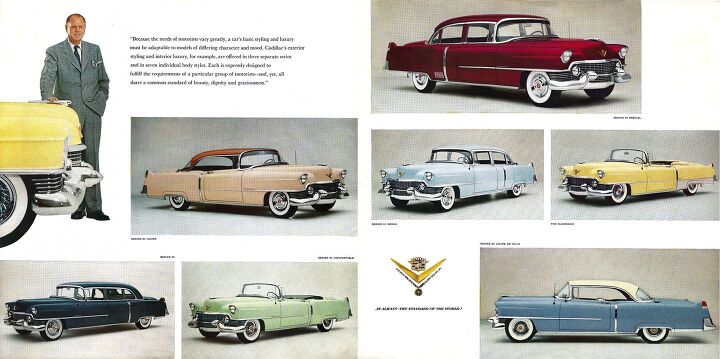

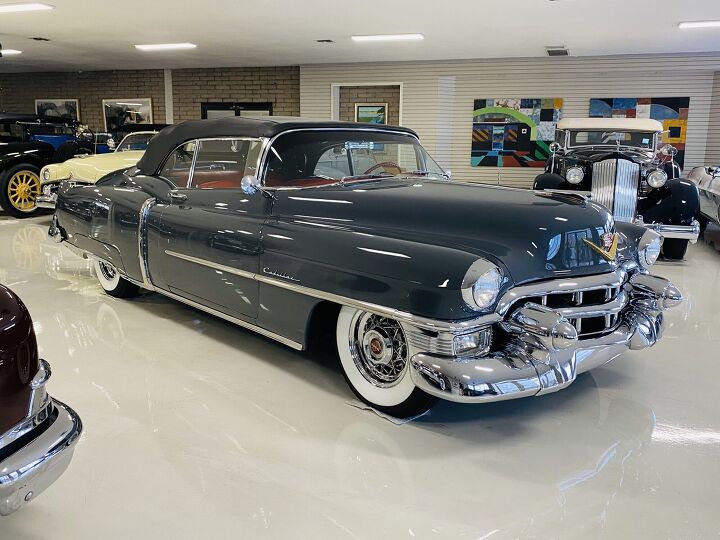
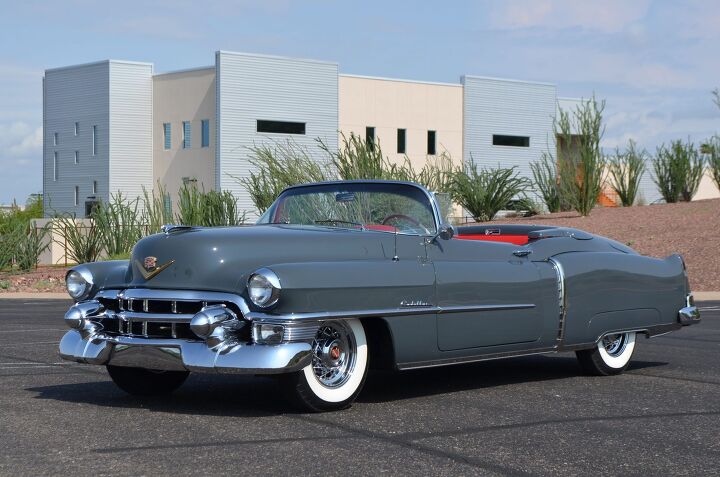


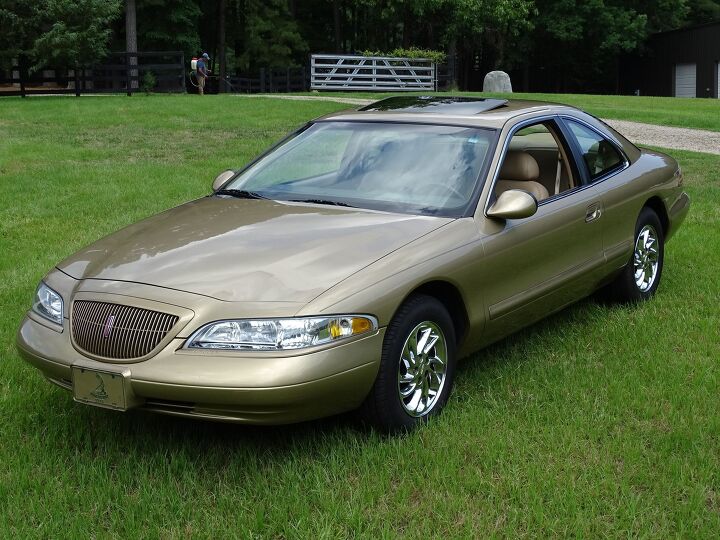
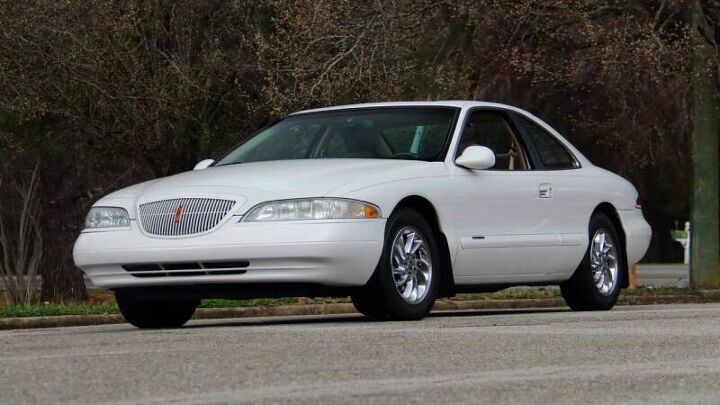


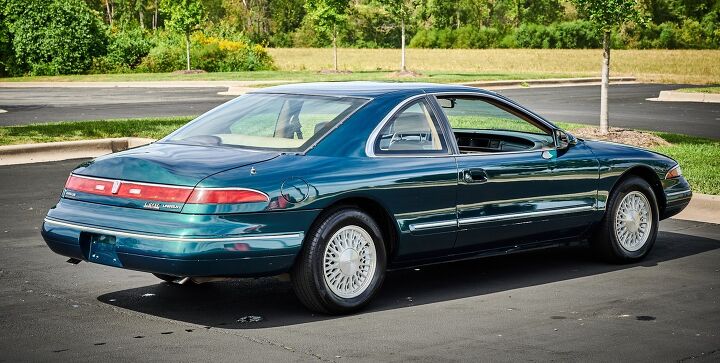
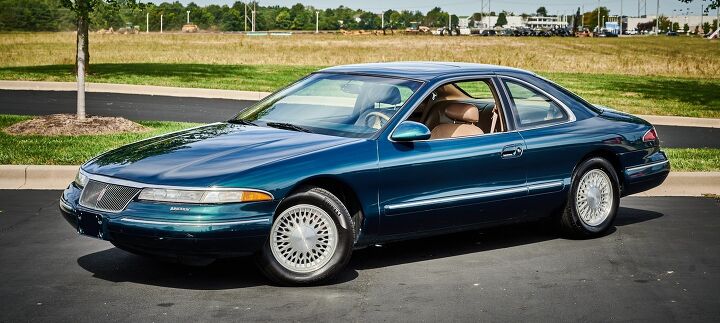
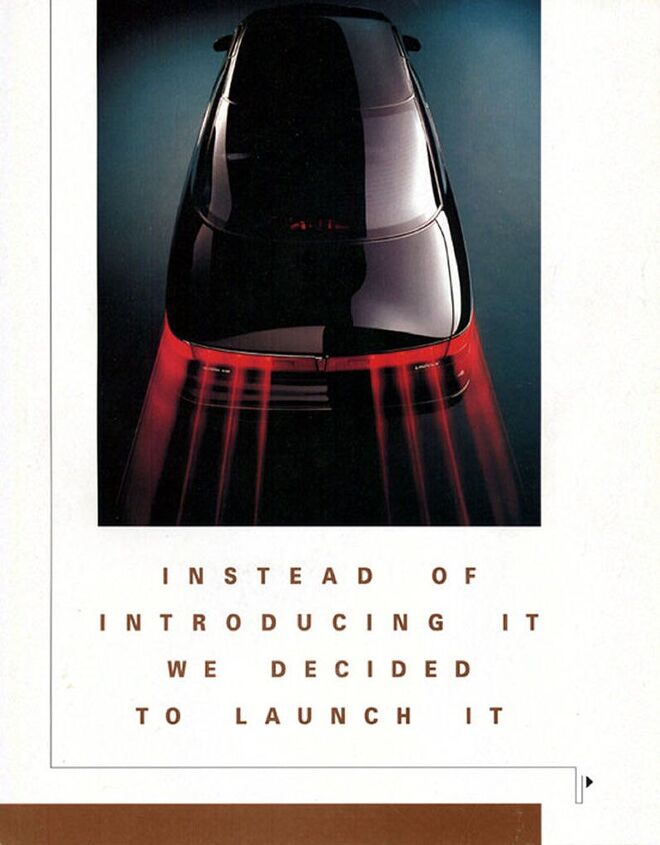

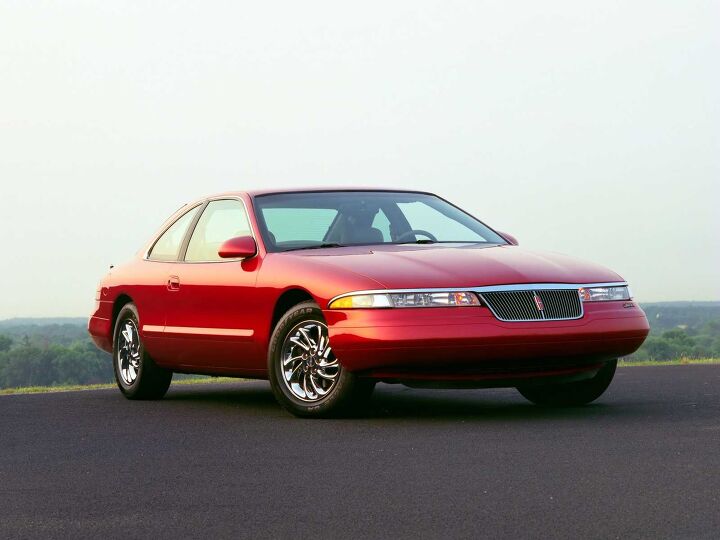
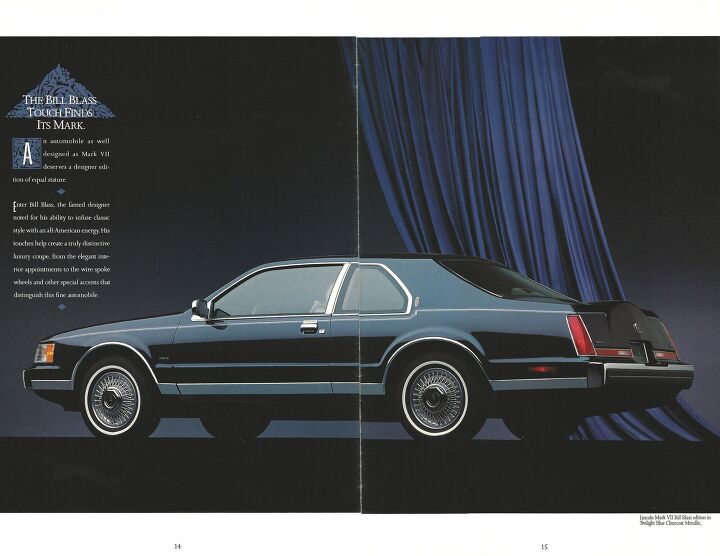
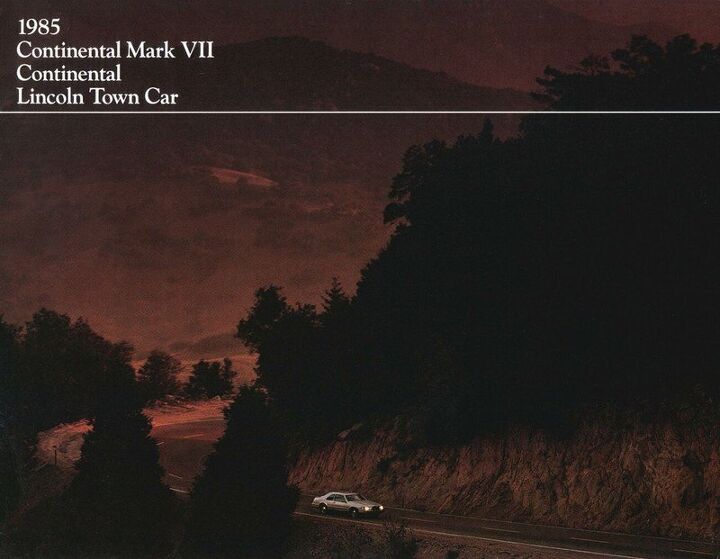
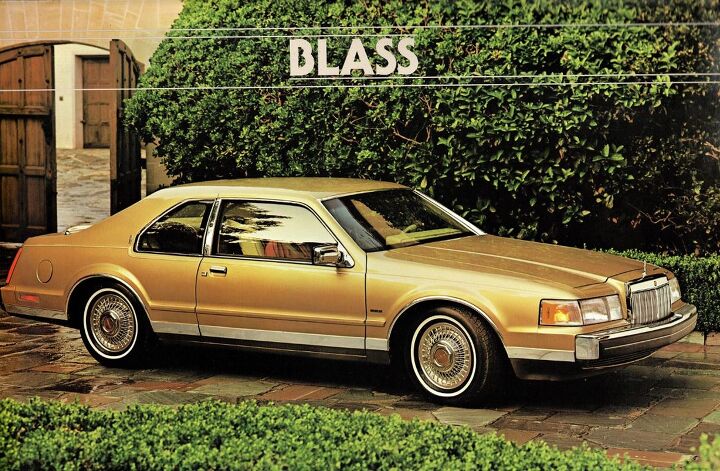
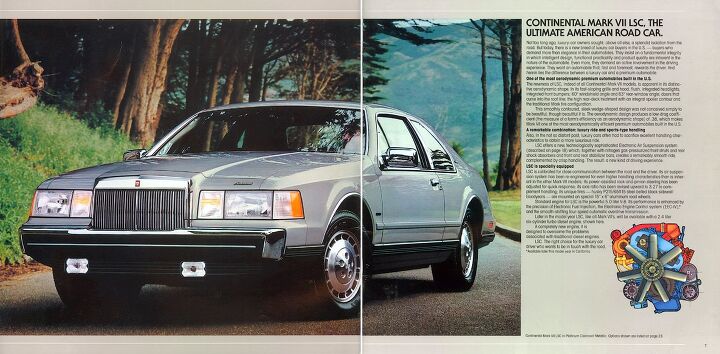
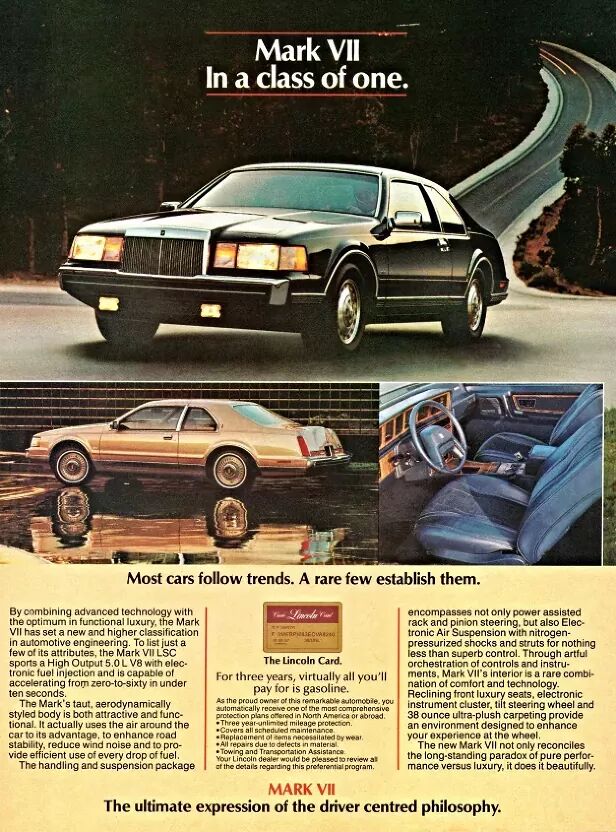

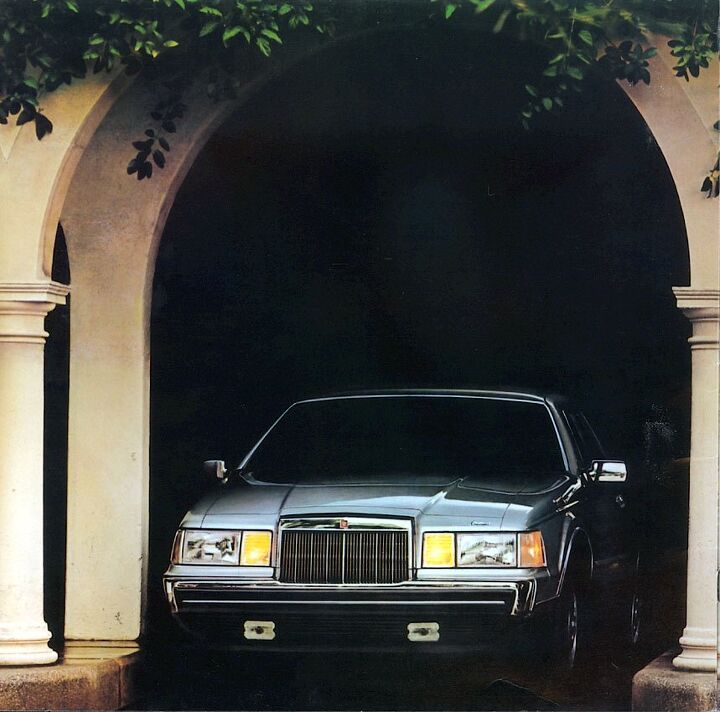

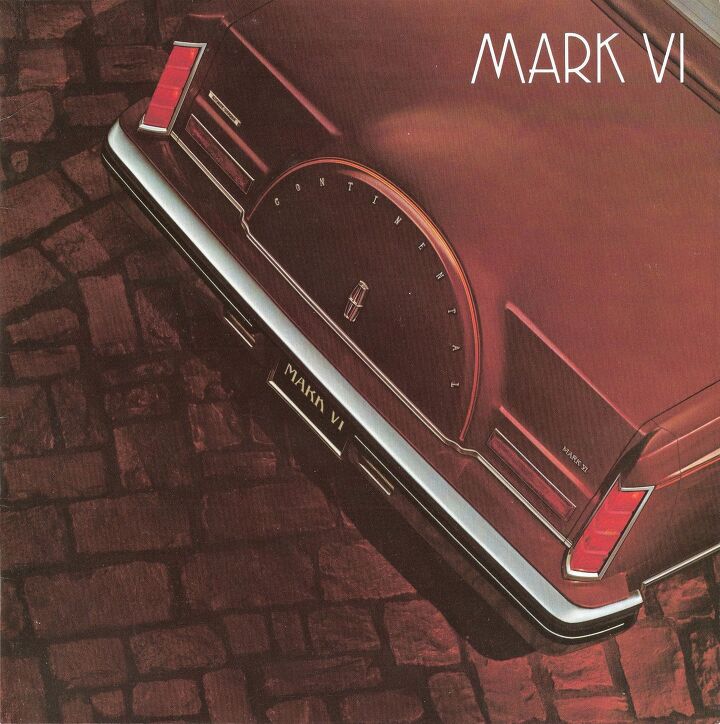

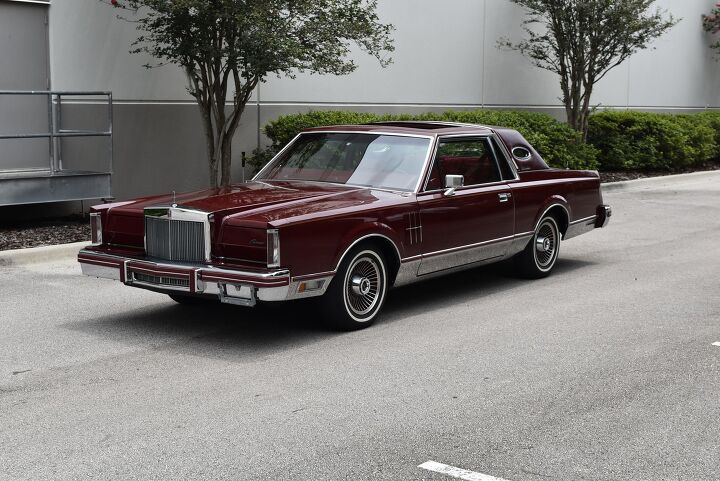
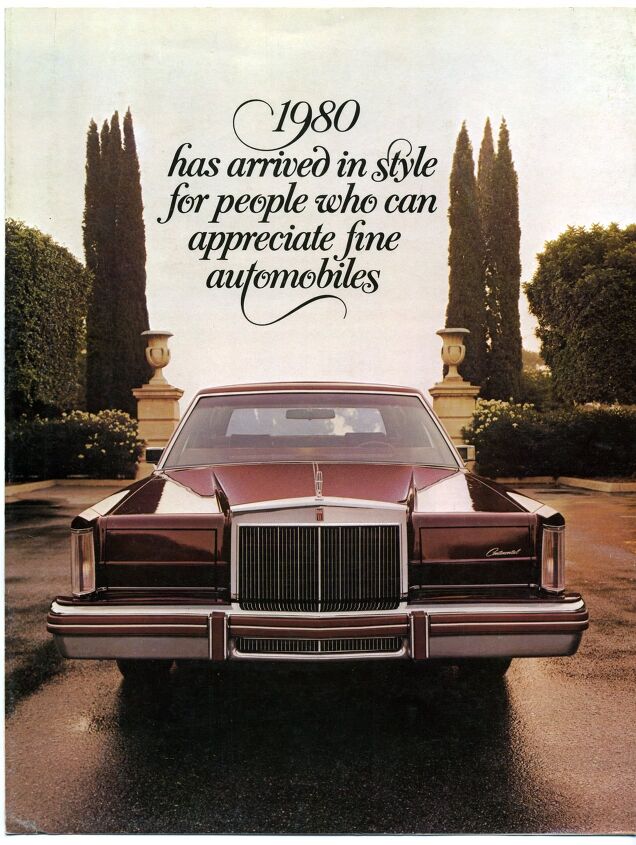



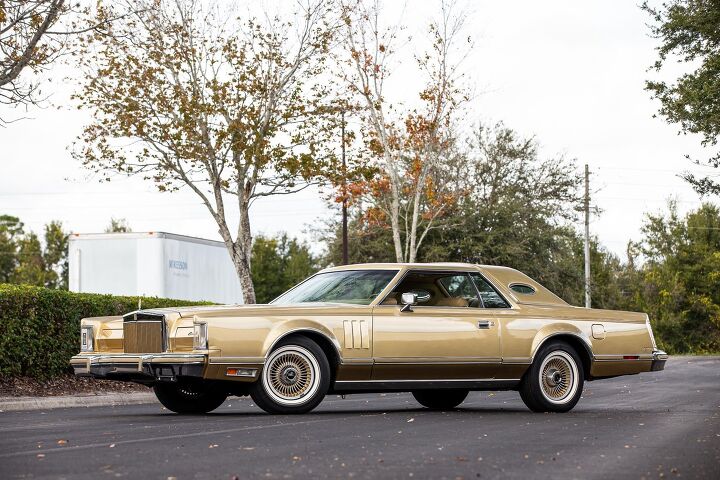


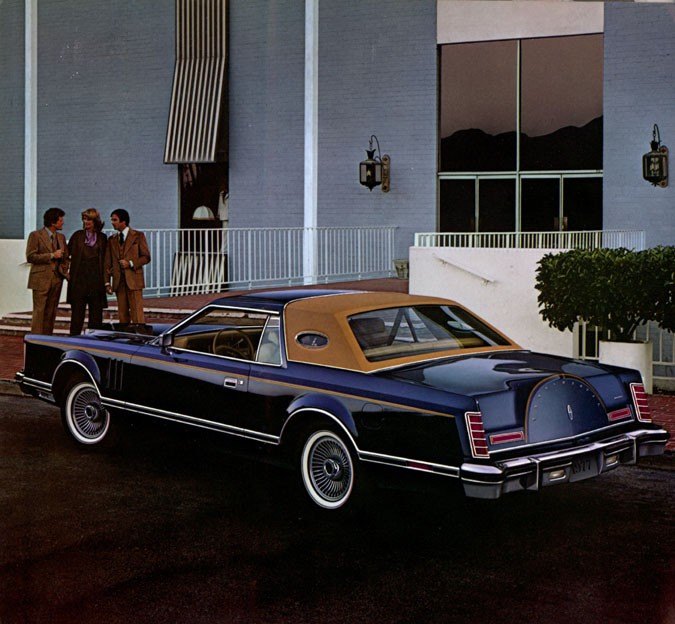
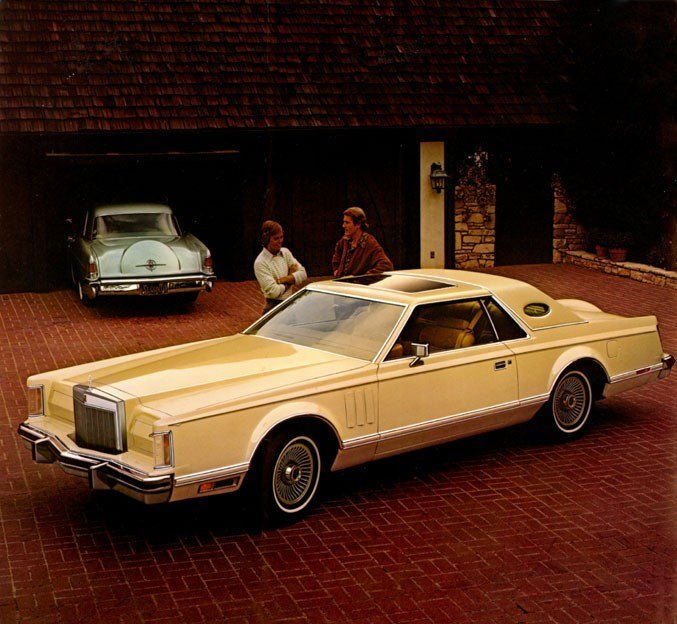
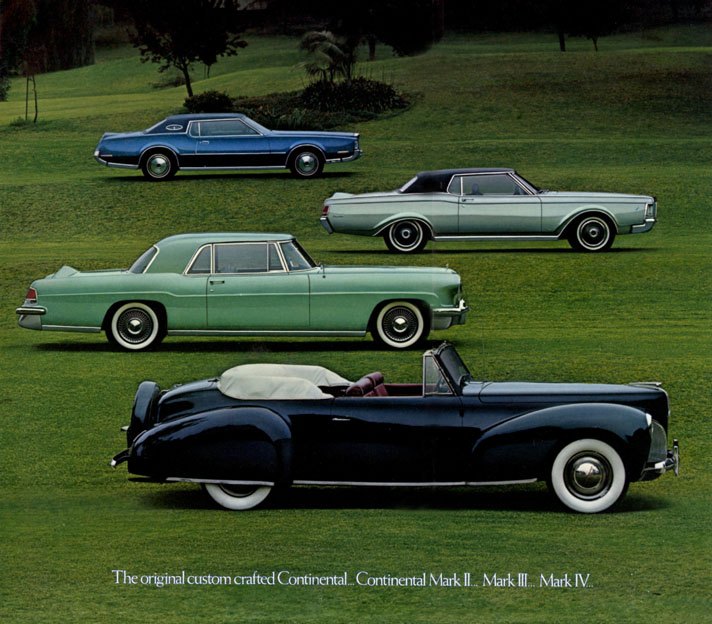

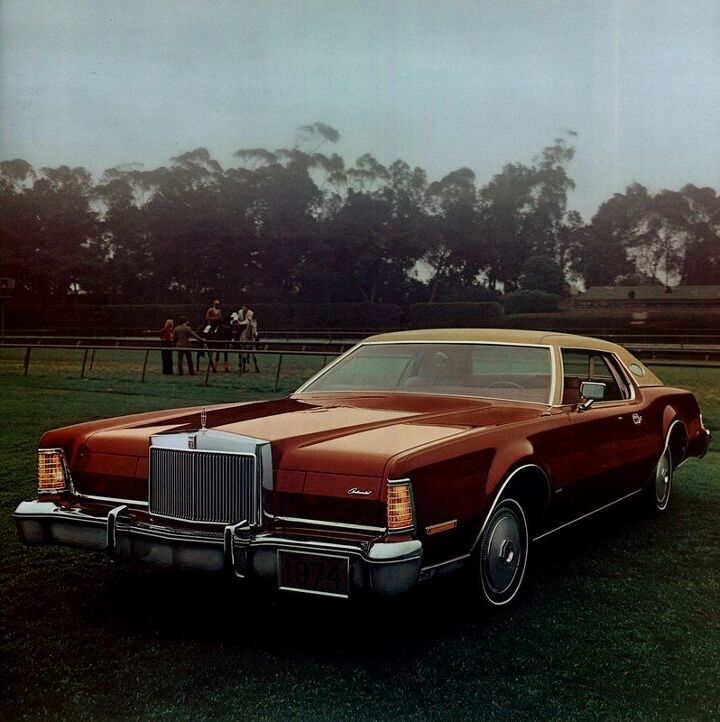
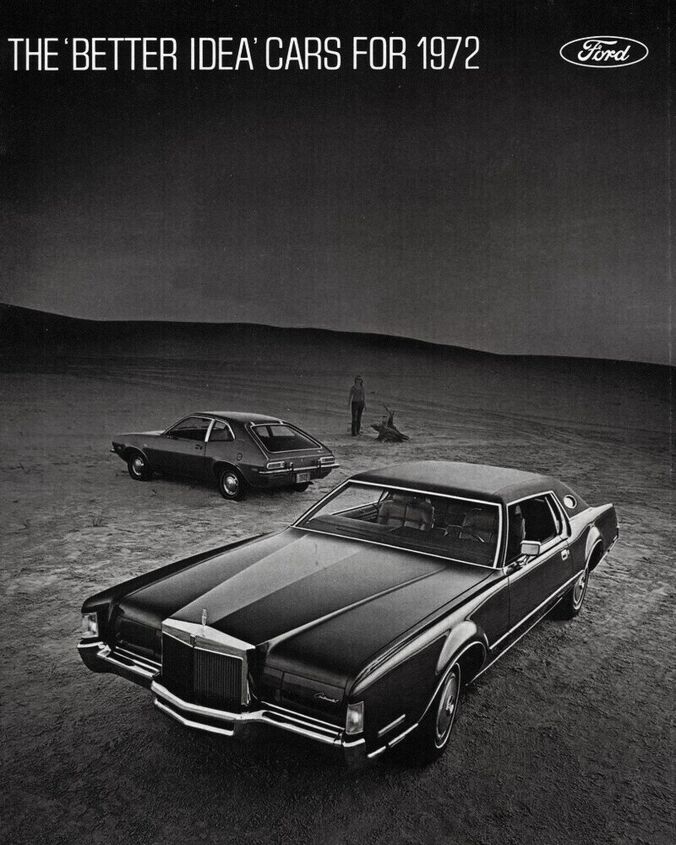
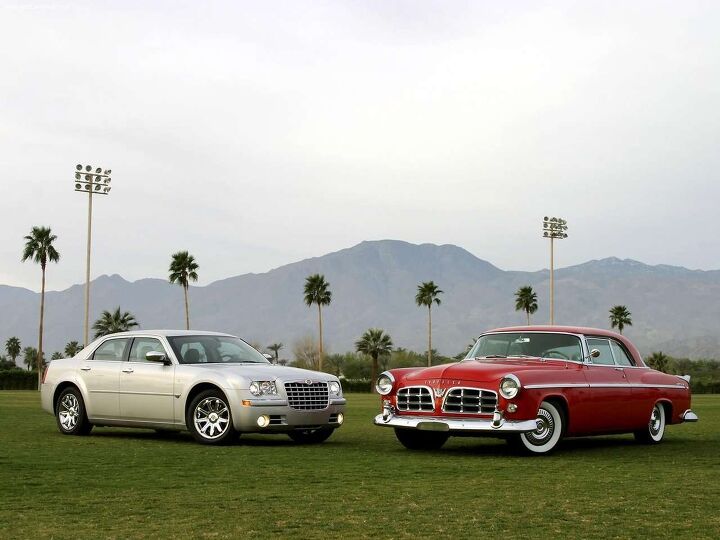
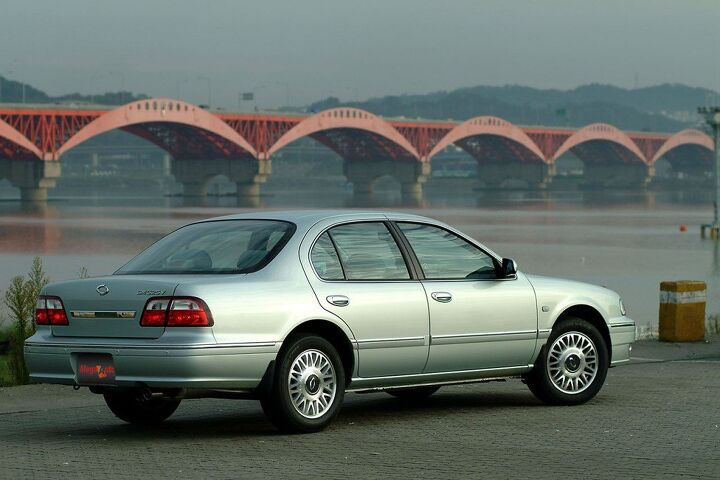














Recent Comments